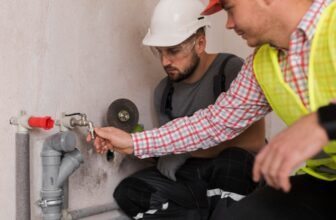
When it comes to surveillance and security, having the right camera can make all the difference. Two types of cameras that often get compared are 180-degree cameras and 360-degree cameras. But which one should you choose for your home or business? In this article, we’ll dive deep into each camera type’s differences, advantages, and ideal uses to help you make an informed decision.
Introduction to 180 vs 360 Degree Cameras
In today’s security-focused world, cameras are essential tools for monitoring and protecting both commercial and residential spaces. The rise of wide-angle lenses has given birth to two powerful contenders in the camera market: 180-degree cameras and 360-degree cameras. While both provide wide coverage, they differ significantly in their functionality and application.
Before diving into their comparisons, let’s break down what each of these cameras offers.
What is a 180-degree camera?
A 180-degree camera is designed to cover half of a full circle, or 180 degrees of a given space. This means it provides a wide field of view, but its coverage is limited compared to 360-degree cameras.
Key Features:
- Typically covers a large portion of the area in front of the camera.
- Ideal for wall-mounted surveillance or monitoring areas like entrances, hallways, or parking lots.
- May require multiple cameras to cover more areas.
What is a 360-degree camera?
A 360-degree camera offers a complete, spherical view of its surroundings. It can capture footage in every direction at once, making it perfect for wide-open spaces or areas that require constant surveillance.
Key Features:
- Offers a full panoramic view, covering all angles around the camera.
- Ideal for round-the-clock surveillance in environments like stores, warehouses, or large rooms.
- Generally comes with motion detection and smart features for optimal functionality.
Key Differences Between 180 and 360 Degree Cameras
Now that we have a basic understanding of both camera types, let’s take a closer look at their differences in terms of performance, CCTV installation services, and usage.
Field of View
The most obvious difference between a 180-degree camera and a 360-degree camera is the field of view:
- A 180-degree camera typically provides coverage for one side of the room or area. It’s perfect for monitoring entrances, hallways, or driveways where you need to focus on a specific section.
- A 360-degree camera, on the other hand, offers a complete surround view, perfect for areas where you need to capture everything happening around the camera.
Installation
Both types of cameras have relatively simple installation processes, but they vary depending on their orientation and the environment:
- 180-degree cameras are often mounted on walls or ceilings, aimed towards the area you want to monitor. They are relatively easy to install, especially when you need focused coverage.
- 360-degree cameras, however, are designed to be mounted in the centre of a room or area to provide equal coverage in all directions. While the CCTV camera installation services may seem a bit more complex, it’s incredibly effective in larger, open spaces.
Coverage and Versatility
- 180-degree cameras offer a wide field of view but typically cover only half of an area. To cover a larger space, you would need to install multiple cameras.
- 360-degree cameras cover everything within their surroundings, making them ideal for large areas where continuous monitoring is necessary.
Image Quality and Clarity
- Both camera types provide high-definition (HD) video, but due to the broader angle, a 360-degree camera may have a slight reduction in image quality because the camera has to compress the entire surrounding area into a single frame.
- 180-degree cameras, with their more focused angles, may produce sharper images in specific zones but at the cost of not covering as much area.
When Should You Choose a 180-Degree Camera?
A 180-degree camera is ideal for areas that require focused monitoring. Here are a few situations where these cameras work best:
- Entryways and doorways: Perfect for watching over entrances where you want to monitor who is entering or leaving.
- Narrow hallways: If you’re monitoring long, narrow spaces, a 180-degree camera can give you the perfect coverage.
- Parking lots and driveways: For watching cars or vehicles, a 180-degree camera can be aimed precisely at specific spots.
When Should You Choose a 360-Degree Camera?
360-degree cameras shine when you need full surveillance in larger or open spaces. Consider using them in the following scenarios:
- Lobbies or waiting rooms: A single 360-degree camera can capture all movements and activity.
- Warehouses and retail stores: They provide a full overview of the area, ensuring no activity goes unnoticed.
- Open outdoor spaces: Perfect for monitoring large yards, fields, or parking areas.
Advantages of 180-Degree Cameras
- Focused Surveillance: Ideal for areas where you want to focus on specific, high-priority spots.
- Cost-Effective: Generally less expensive than 360-degree cameras, making them a good choice for smaller areas or budget-conscious buyers.
- Easy to Install: Simple installation, especially in smaller, more defined spaces.
Advantages of 360-Degree Cameras
- Comprehensive Coverage: Perfect for areas that need constant and all-around monitoring.
- Convenient: A single camera can replace multiple 180-degree cameras, reducing the need for multiple units.
- Improved Security: Provides an uninterrupted view of the entire environment, ensuring no blind spots.
Which One Is Better for You?
Choosing between a 180-degree or 360-degree camera depends on the size of the area you’re looking to monitor, the complexity of your security needs, and your budget. Here’s a quick guide to help you make a decision:
- For smaller areas like hallways, entrances, and parking spaces, a 180-degree camera is often more than enough.
- For larger or more open spaces, such as lobbies, warehouses, or retail stores, a 360-degree camera is the best choice, offering complete coverage with minimal blind spots.
Conclusion
Both 180-degree and 360-degree cameras offer unique advantages, but the decision ultimately depends on your specific needs. If you require more focused surveillance on a smaller area, a 180-degree camera will serve you well. However, for larger, more open spaces where you need full coverage, the 360-degree camera is the better option.
By understanding the differences in coverage, installation, and usage, you can choose the camera that fits your security needs best.







